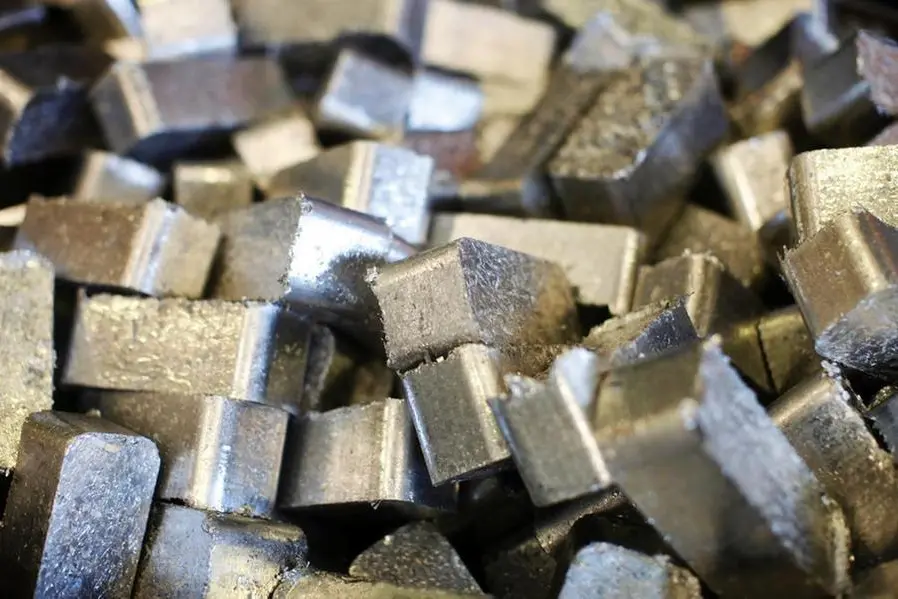PHOTO
LONDON - The new year started with a bang in the Chinese alumina market.
The Shanghai Futures Exchange (ShFE) price for the product that sits between bauxite and metal in the primary aluminium production chain jumped 30% over the last two weeks of December, peaking at a Jan. 3 high of 3,838 yuan per metric ton.
The distant trigger for the supercharged rally was a Dec. 18 explosion at an oil terminal in Conakry, the capital of Guinea, which is a major bauxite supplier to China's alumina refineries.
The price panic quickly subsided as it became clear there will be no prolonged disruption to shipments from the West African country, but the incident highlights both the growing Chinese dependence on Guinean bauxite and an emerging new source of volatility in aluminium pricing.
GROWING DEPENDENCE
China's imports of Guinean bauxite have climbed over the past few years as the African country has emerged as a major supplier of the raw material required by the world's alumina refineries.
China imported only 334,000 tons of Guinean bauxite as recently as 2015, making it a small part of an import mix dominated by shipments from Malaysia and Australia.
The tally over the first 11 months of 2023 was 91 million tons and the Guinean share of total bauxite imports was 70%.
This growing dependency helps explains the oversized price reaction to events in Conakry, which threatened to disrupt transport of bauxite from the country's mines to its main shipping terminals.
It didn't help that the Chinese aluminium raw materials market was already tight.
Supply from bauxite mines in the north of China was disrupted over the back end of 2023 because of closures for government inspections.
Several alumina refineries have also had to close or curtail operations to meet energy and emissions targets.
The combination of government controls and less domestic bauxite had already taken out more than six million tons of annual alumina capacity in China, according to local data provider Shanghai Metal Market.
The Guinea scare tipped the local market into full panic mode, though there is no indication that the country's mining operations were affected or that shipping will suffer significant disruption.
NEW MARKET
It's not the first time the alumina market has suffered a supply scare. What's different this time, though, is the existence of an alumina futures market in Shanghai.
ShFE launched its alumina product in June last year, which has injected an extra dose of volatility into the pricing mix.
The price spike was accompanied by a surge in trading volumes, with 1.3 million contracts - equivalent to 25 million tons - changing hands on Jan 3. Cumulative volumes this month have already exceeded 68 million tons.
It's clear that the Guinean news has generated a major realignment of hedge positioning and sucked in speculative interest to the fledgling contract.
This is a booster for the Shanghai exchange. Both the London Metal Exchange (LME) and the CME have listed alumina contracts, but neither has prospered.
The LME contract started trading in October 2019 but after a flurry of early interest it hasn't traded at all for the past three years.
The CME product was launched in 2016 and fared better until volumes dried up last May. Open interest slumped to only 50 contracts at the end of the year.
This is not entirely surprising since the spot market outside of China is minimal, with most volumes locked into annual supply contracts.
NEW VOLATILITY
While the ShFE's new product seems set to become the leading price indicator for the alumina market, it also represents a new source of volatility for the whole aluminium supply chain.
The spike in alumina prices generated an echo effect on the Shanghai primary aluminium contract, which rallied to its highest in nearly two years amid a noticeable pick-up in trading volumes.
The ripple effect spread from Shanghai to the London market, where LME three-month aluminium surged to $2,400 a ton for its highest since April.
Aluminium prices have swiftly fallen back as the threat of serious disruption to Guinean bauxite supplies has receded.
The Shanghai alumina price has also given back some its gains, at 3,410 yuan it is still trading at elevated levels relative to prices before the Conakry fire.
The Chinese market, it seems, is still trying to price its growing sensitivity to events on the west coast of Africa.
The rest of the world may also need to re-evaluate how aluminium prices can be rocked by moves on the new Shanghai alumina contract. ($1 = 7.1610 Chinese yuan renminbi)
The opinions expressed here are those of the author, a columnist for Reuters.
(Editing by David Goodman)





















